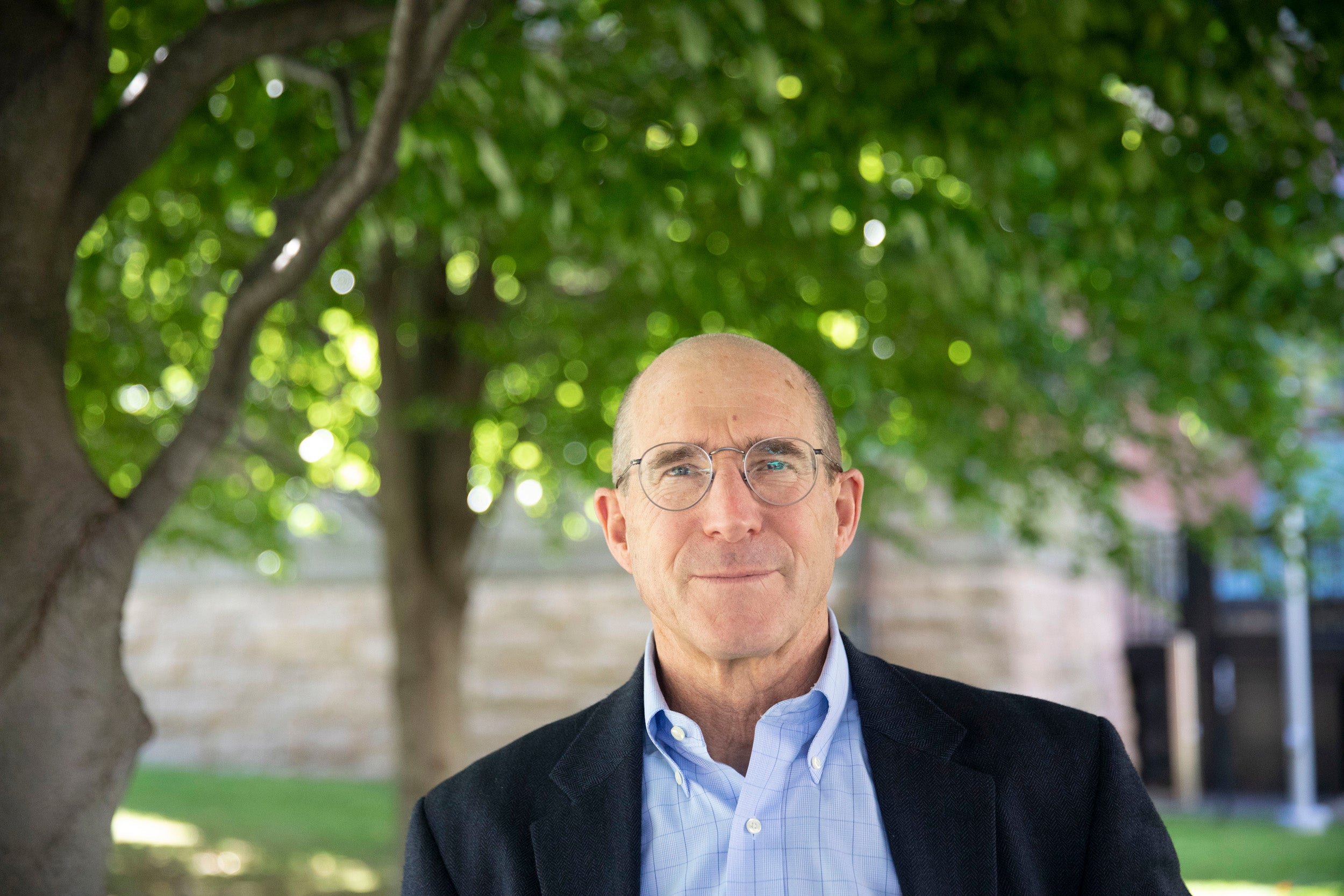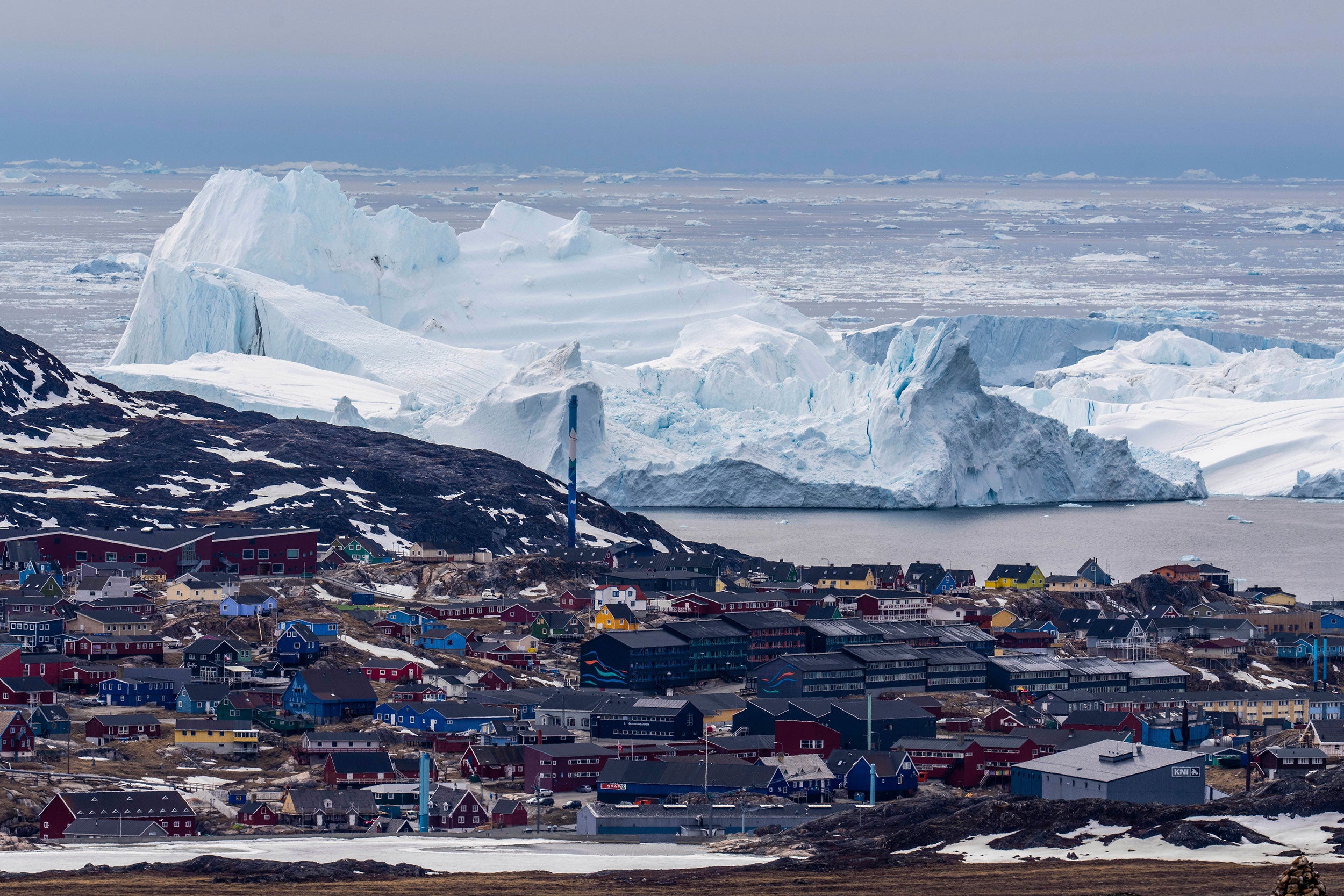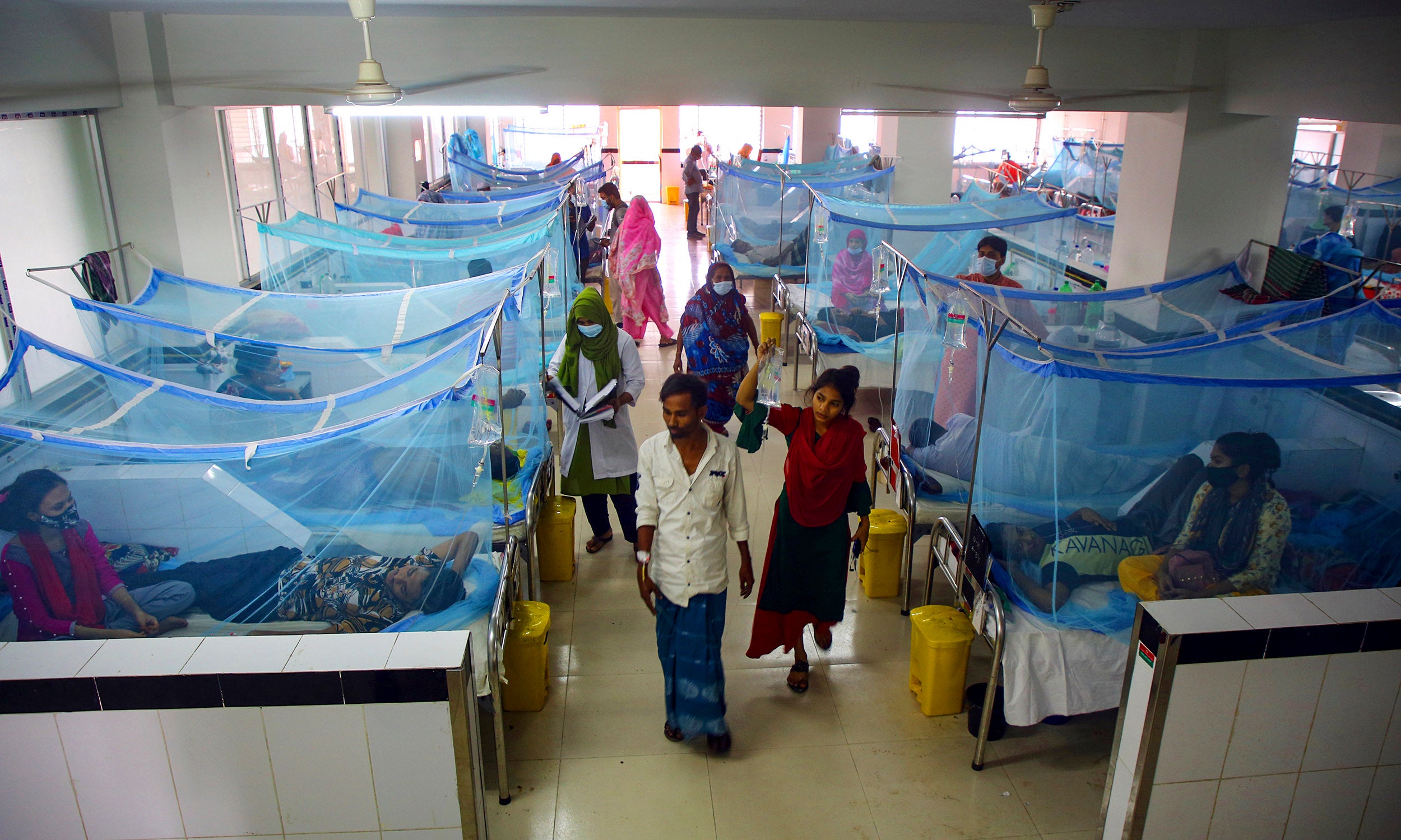
Patients lie under mosquito nets in a Dengue ward in Bangladesh in August. A new report linking public health threats with climate change finds that the transmission potential for Dengue fever in the U.S. is rising.
AP file photo
Viewing climate change as a human health problem
Renee Salas wrote influential Lancet brief on U.S. effects, connects dots on death, disease from warming world
This week, the medical journal The Lancet released its annual “Report of the Lancet Countdown on Health and Climate Change” and a companion brief focused on conditions in the United States. The brief urges action to curb global-warming emissions, arguing that the health impacts of a shifting climate are already being seen in the U.S. and rapidly growing severe. Those include direct effects, such as illness from extreme heat or drowning from floods, as well as indirect and less-obvious ones, like shifting infectious-disease patterns or worsening allergies and asthma from more-intense pollen levels. Renee N. Salas, assistant professor of emergency medicine at Harvard Medical School, ER physician at Massachusetts General Hospital, climate and health expert at the Harvard Global Health Institute, and Yerby Fellow at the Harvard T.H. Chan School of Public Health’s Center for Climate, Health, and the Global Environment, was the lead author of the U.S. brief and an author on the global report. She spoke with the Gazette about the findings.
Q&A
Renee N. Salas
GAZETTE: Were there examples this year of weather extreme enough to affect people’s health that could be at least partly related to climate change?
SALAS: Yes. Climate change makes it more likely for these events to be more intense. This often translates to worse health outcomes and increased health-system disruption. One way to think about it is that climate change loads the dice. Overall, recent research found more than a third of heat-related deaths in U.S. cities can be attributed directly to climate change. The Pacific Northwest heat wave in June of 2021 was found by climate scientists to be virtually impossible without climate change. It was a catastrophic mass-casualty event estimated to have led to over 600 excess deaths in Washington and Oregon in a week. And there were more than 70 times the number of heat-related emergency department visits when compared to that same time period in 2019. We have an enormous opportunity to limit these harms by acting swiftly and decisively on climate change to protect health and advance equity.
GAZETTE: So we can expect more events that are completely out of the range of normal weather for a region?
SALAS: Climate change is worsening heat waves, making them more frequent, longer, and hotter. It’s amplifying drought and intensifying wildfires. It is supercharging hurricanes, which are slower, wetter, and stronger because of climate change. Climate change is fueling flood risks with increased heavy-rainfall events. It is raising sea levels that contribute to coastal flooding, which is especially of concern here in the Northeast because we are experiencing some of the highest rates of sea-level rise in the country. At the same time, there’s an increased risk that we’re going to have more very extreme events.
The Intergovernmental Panel on Climate Change shows that it’s imperative to urgently transition to a very low carbon-emission pathway if we want to keep temperature rise to below 1.5 degrees Celsius. Even though a 10th of a degree can seem small and insignificant, every fraction has significant implications for health and equity. So an extreme heat event that used to happen once every 10 years in the second half of the 19th century is today three times more likely. When we look at a 1.5 degree versus a 2 degree Celsius temperature rise, this half a degree means the difference between those events being nearly four times versus six times more likely, with an increased chance of even hotter temperatures. This translates to increased illness, suffering, and death.
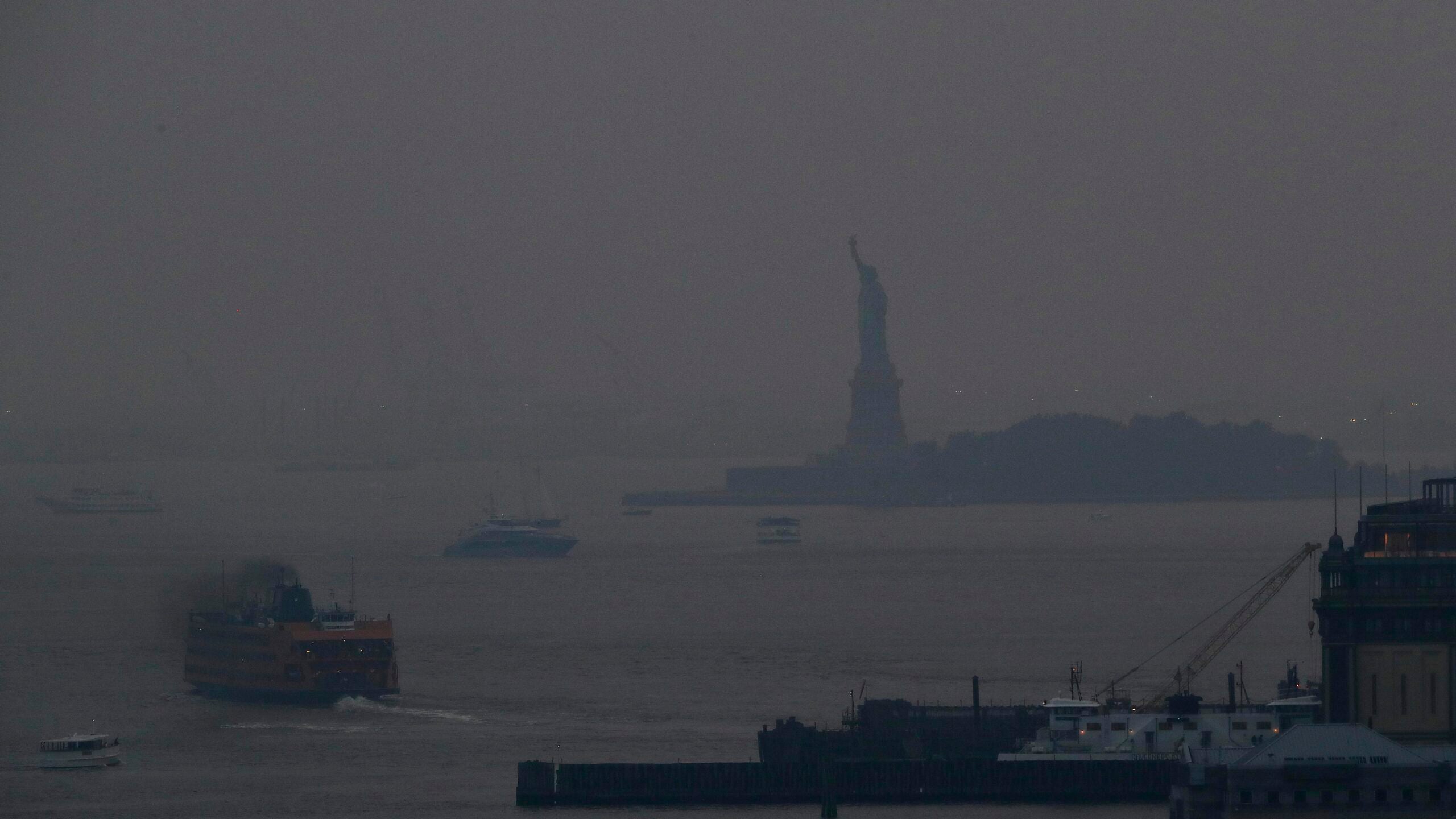
Wildfires on the West Coast in July caused hazy skies as far away as New York City.
AP file photo
GAZETTE: The policy brief talks about the health impacts of wildfires. Maybe I just wasn’t paying attention when I was a kid in New England, but I don’t remember my throat getting scratchy because of wildfires in California and western Canada.
SALAS: The extreme heat, combined with the extended drought — which climate change has its fingerprints all over — triggered a record-breaking wildfire season in the western U.S. in 2020. It’s a trend that’s continued into 2021. And in July 2021, wildfire smoke from California’s massive Dixie fire reached as far east as Maine, impacting air quality across the East Coast. This contributed to New York City having its worst air quality in 15 years.
Evidence from 2020 showed that particulate matter, one of the many harmful components of wildfire smoke, was upwards of 14 times the current health-based limits of air quality in the vicinity of the wildfires and could still be four times that limit 600 miles away. This highlights that we are all interconnected in this crisis and that what is happening halfway across the country can have clear implications for health everywhere. I saw hazy skies when we had poor air quality because of those wildfires, and it was harming both me and my patients.
GAZETTE: Is there evidence that the smoke may get more toxic on the way across the country?
SALAS: There is emerging science that the particulate matter from wildfires may be 10 times more harmful than particulate matter in air pollution from other sources. In addition, it seems that the health harms from wildfire smoke may be worse farther away from the fire. Scientists think that could be because of a process called oxidation, which is a chemical reaction that happens as wildfire smoke is in the air longer. There are other factors as well, like perhaps people not recognizing the health-harming dangers of this air pollution and so not protecting themselves. This is one of many critical areas that we need to understand better so we can best protect health, especially for those most vulnerable.
“Climate change is first and foremost a health crisis. Bold, ambitious commitments at COP26 will be the greatest prescription for improving health and equity that the world can write.”
GAZETTE: During those smoke episodes, did you see any change in the emergency room at MGH?
SALAS: The health harms can range from the subtle — like a transient cough and mild sore throats, like you experienced — to the really severe, like worsening of lung diseases, higher risks of preterm birth, and death. So, it has clear implications for health, the conditions I will treat, and even the number of patients I’m going to see in the emergency department.
GAZETTE: The brief talks about Dengue fever, a disease I think most Americans aren’t familiar with. What is Dengue fever and why might it become a bigger hazard?
SALAS: Dengue is a disease transmitted by mosquitoes, which is worsening around the world, in part because of climate change. It is altering temperature, rainfall, and humidity, making the environment increasingly suitable for Dengue to spread through mosquitoes. Our new data shows that the transmission potential for Dengue in the U.S. is rising. This transmission potential was on average over 50 percent higher in the past five years compared to the 1950s. It briefly rose above one for the first time in the U.S. in 2017. A transmission potential above one, as we’ve become more familiar with during the COVID-19 pandemic, could potentially lead to an outbreak on U.S. soil under the right conditions. This really highlights the importance of research on future health threats, so we can prepare.
GAZETTE: They call Dengue break-bone fever because of the bone and muscle pain it brings. Is it really that unpleasant to get?
SALAS: Yes, the symptoms can range from the mild — essentially a flu-like illness — to causing severe illness and death, especially if you get the disease a second time.
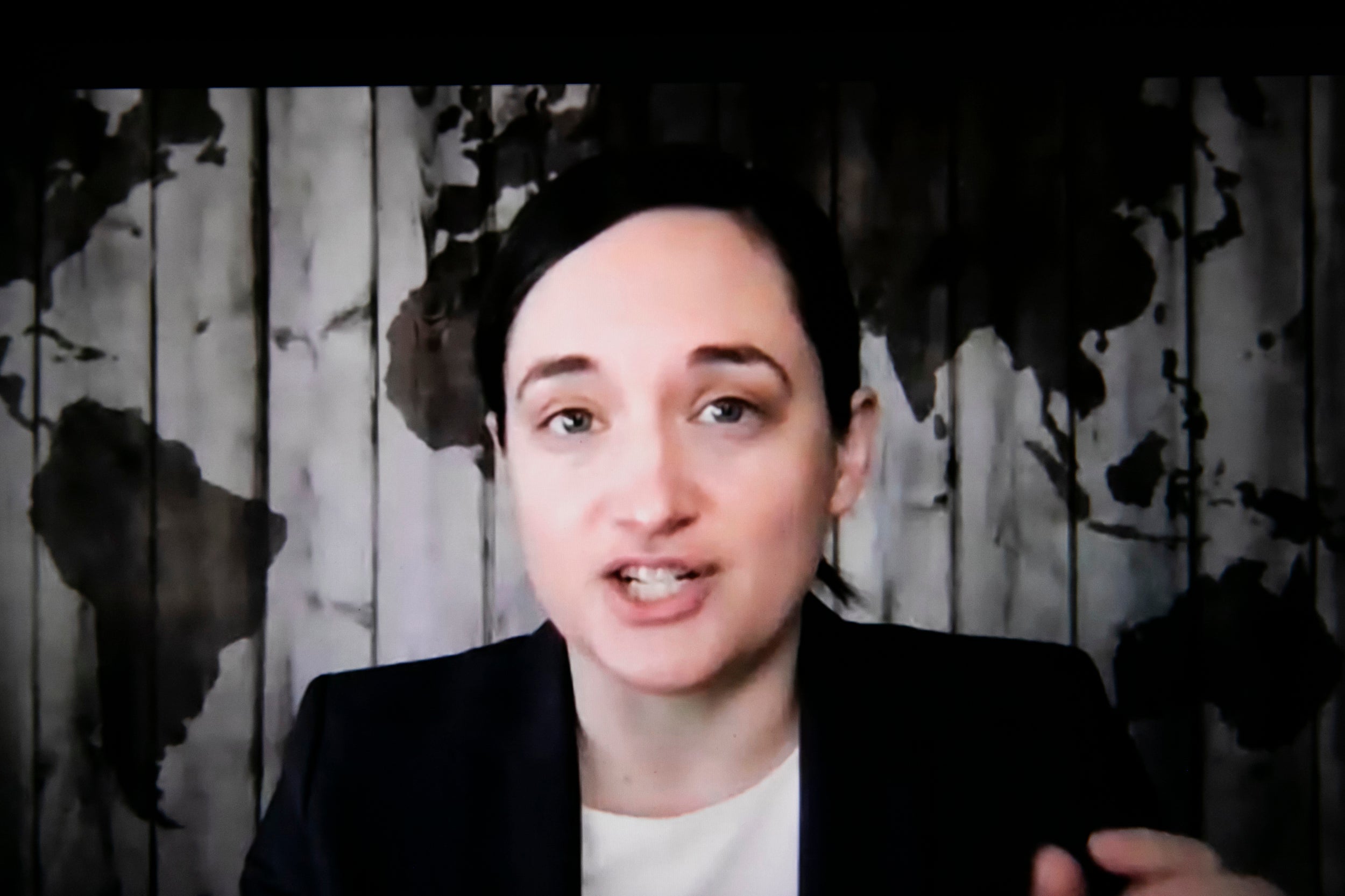
Renee Salas discusses The Lancet’s annual report on climate and health during a virtual press conference.
Stephanie Mitchell/Harvard Staff Photographer
GAZETTE: Let’s talk about the report itself. Is it aimed at the general public or U.S. policymakers or the folks who are going to this climate meeting in Glasgow, COP26?
SALAS: The Lancet Countdown is timed right before COP intentionally because we want to make sure that conversations there are informed by the latest science on how climate change is harming health and the benefits of action on climate change for both health and equity. We intend this wealth of science to be useful to many individuals. First and foremost, we want to make sure it informs decision-making, but we also want to inform both the public-health and medical communities so that they understand the harms their communities and patients are seeing. And we want to use it as an opportunity for the general public to further understand why climate change is personal. It is a health crisis today, and health and equity need to be not only the reason that we act — but be our guiding principle for how we respond.
GAZETTE: Let’s talk about equity and responding to the climate crisis. That’s clearly an important issue.
SALAS: There is a growing recognition that decades-long, racially biased policies have created health inequities and made certain populations more vulnerable. That includes but is not limited to Black, Latinx, Alaskan Natives, American Indians, Asian American, and Pacific Islander communities and other people of color. Policies have also negatively impacted low-income and rural communities. These are populations that are disproportionately exposed to the health harms of burning fossil fuels, both from climate change and air pollution. For extreme heat, historic redlined areas can be substantially hotter than other city neighborhoods. Indigenous communities can disproportionately bear the brunt of droughts. There are certain communities of color that are disproportionately at higher risk from wildfires due to a variety of factors, including discriminatory housing policies. We have a profound opportunity to use policy to improve health and accelerate action toward true health equity.
GAZETTE: Do you share the view that climate change is in the end a health problem?
SALAS: This is the main message that we want people to come away with from this year’s report. Climate change is first and foremost a health crisis. Bold, ambitious commitments at COP26 will be the greatest prescription for improving health and equity that the world can write.
GAZETTE: Was there some specific event that pulled you into the fight?
SALAS: In 2013, when I read the Lancet report, my rose-colored glasses were knocked off. I clearly saw how climate change was going to be the greatest health threat of our time. And I knew that I had to redirect my career and make that a focus. I’ve been blessed to be able to have the opportunity to do that and help advance the work, collectively, with so many amazing colleagues around the country and globe. We are all in this together and that is how we will tackle it: together.



